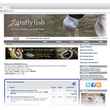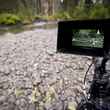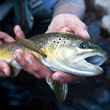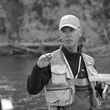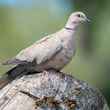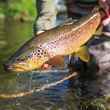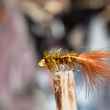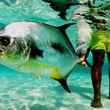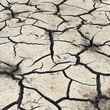Pushing off from the dock on a boat called the Capelin, Sandy Milner’s small team of scientists heads north, navigating through patchy fog past a behemoth cruise ship. As the Capelin slows to motor through humpback whale feeding grounds, distant plumes of their exhalations rise from the surface on this calm July morning. Dozens of sea otters dot the water. Lolling on backs, some with babes in arms, they turn their heads curiously as the boat speeds by.
As glaciers retreat, new streams for salmon
by Lesley Evans Ogden - Friday, Apr 14th, 2023



